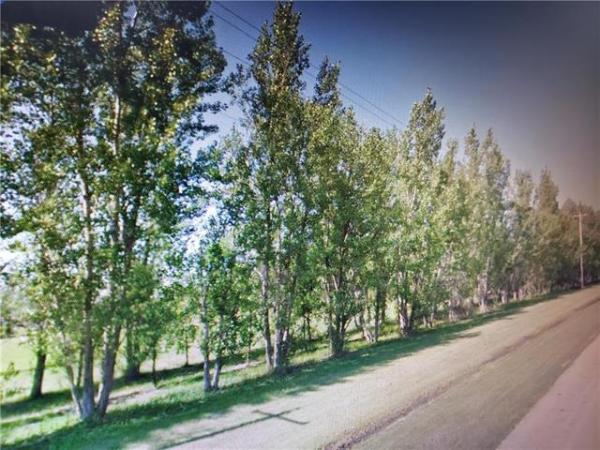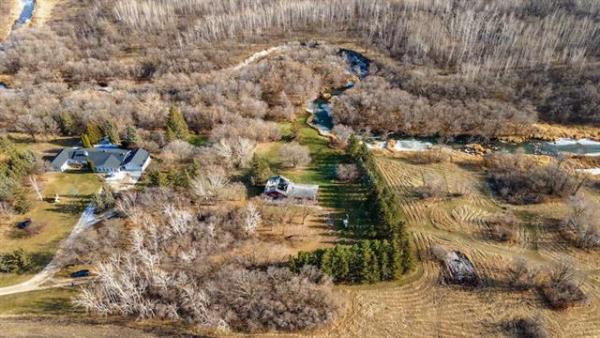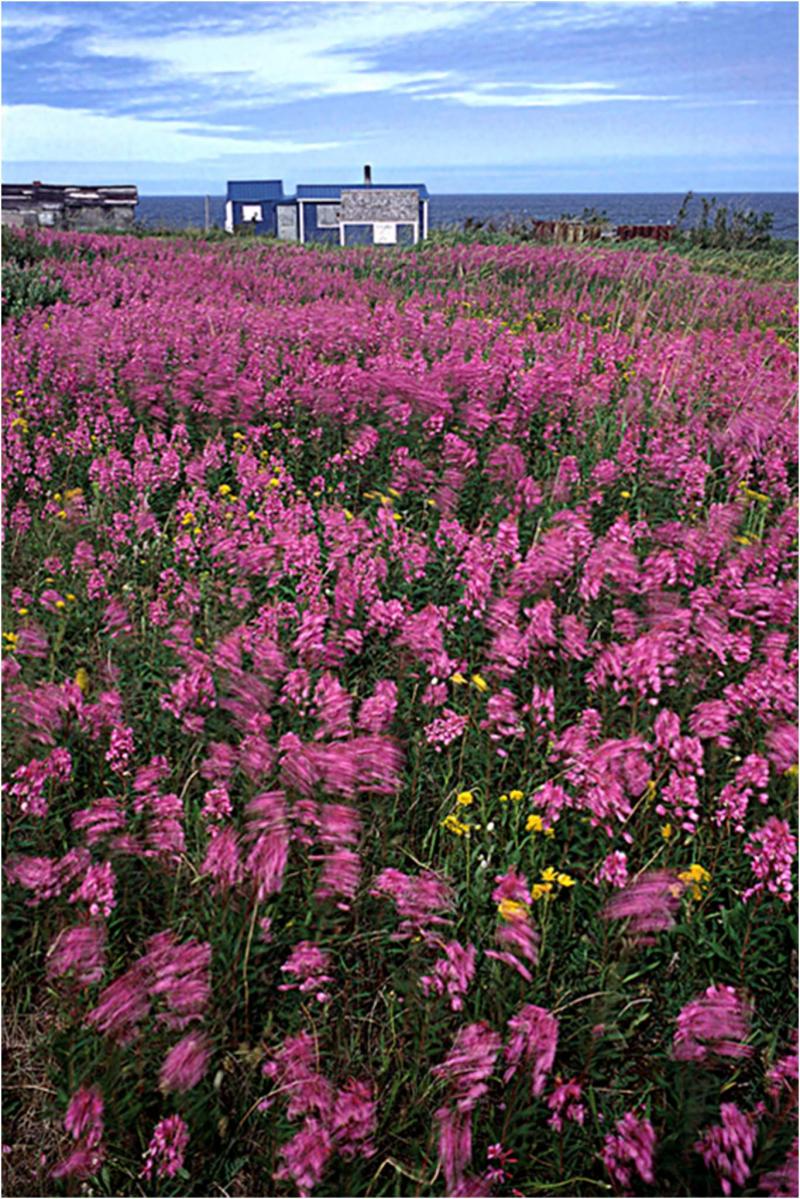
Lorne Heshka
A vivid carpet of purple fireweed blankets large areas in northern Manitoba.
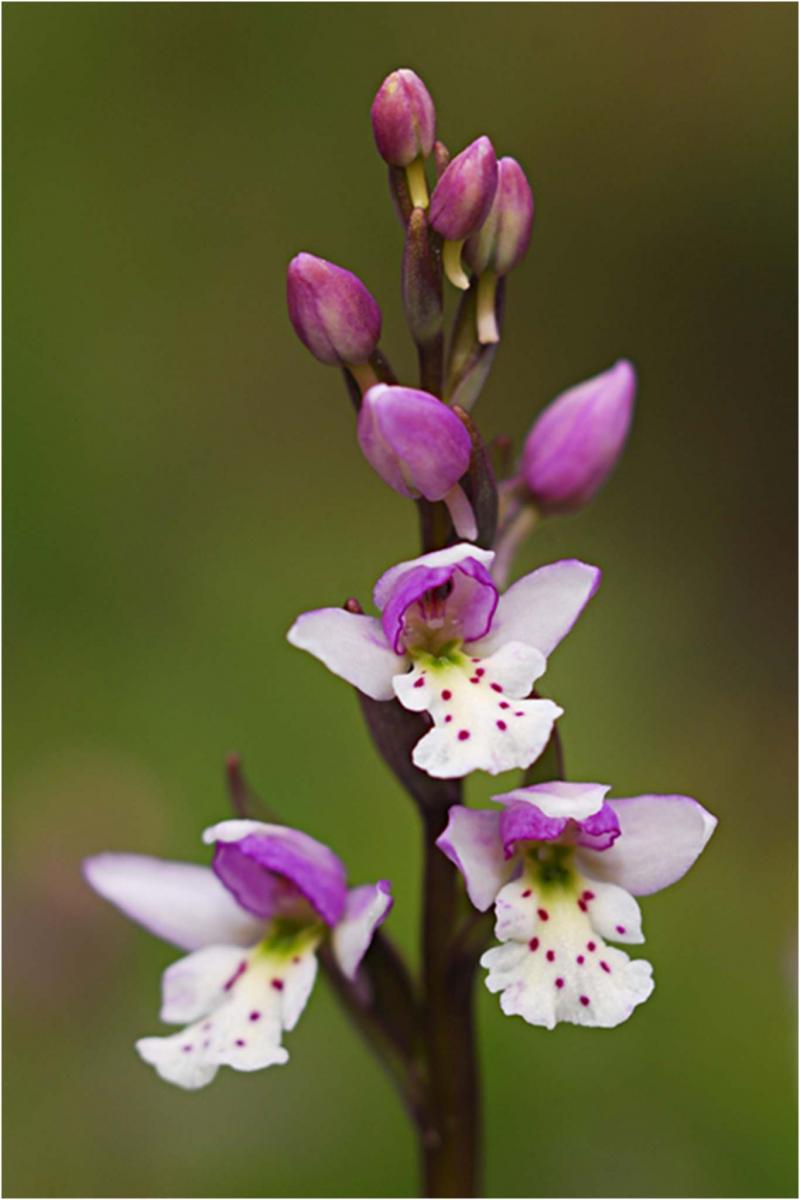
Lorne Heshka
Fly-specked orchid, also known as small round-leaved orchid, is one of 10 orchid species found growing in Churchill Manitoba.
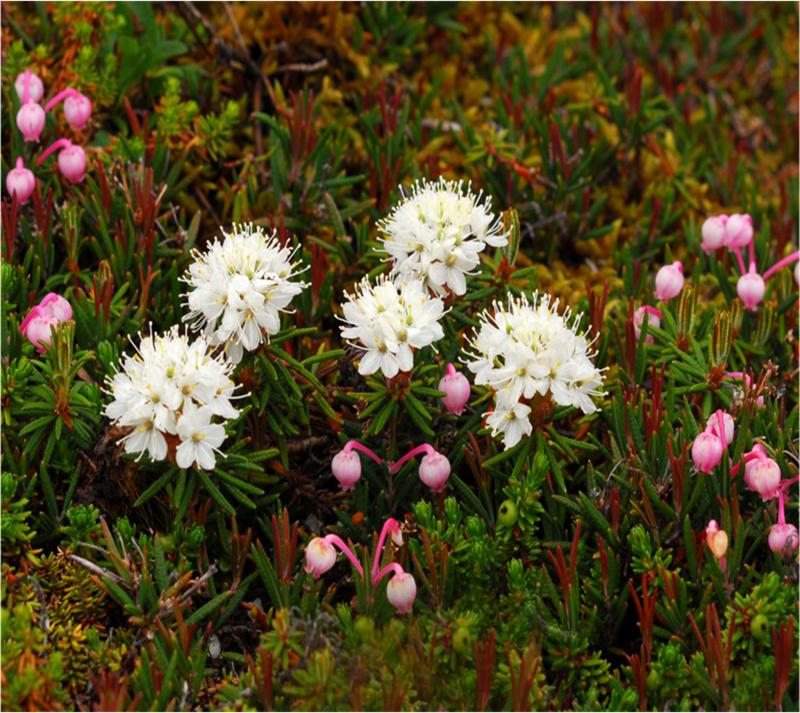
Lorne Heshka
Visitors to Churchill come upon a colourful discovery — Dwarf Labrador Tea mingling with Bog-Rosemary on rocky outcrops.
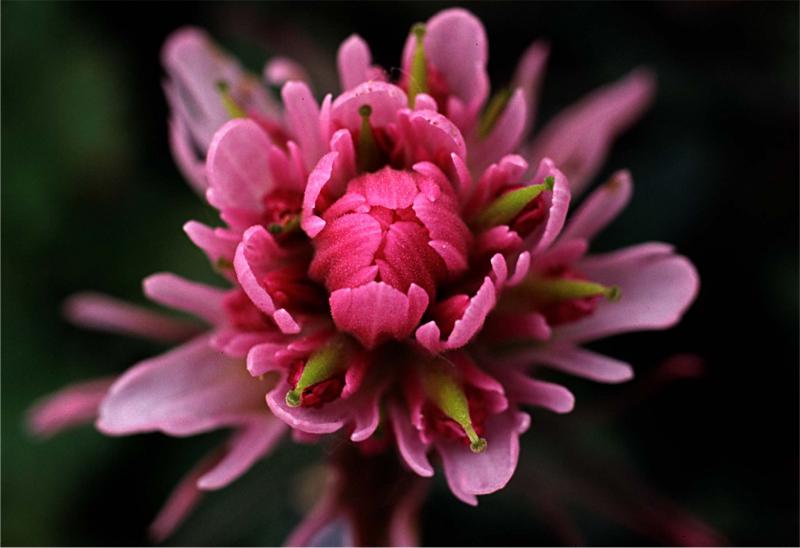
Lorne Heshka
Resembling a snapdragon, Purple Paintbrush is an abundant wildflower.
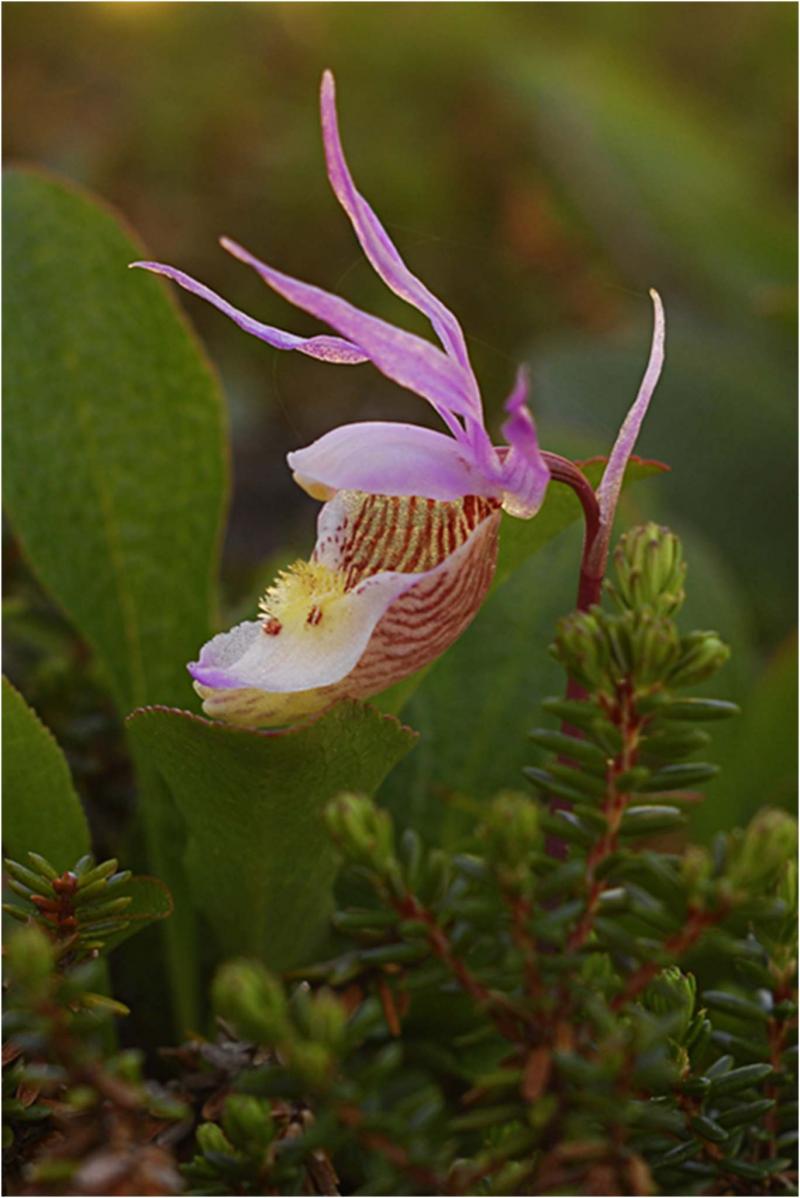
Lorne Heshka
Pretty in pink, Eastern Fairy-Slipper orchid is a rare native orchid that grows near Churchill.
Since 2001, a group of intrepid plant hunters, led by local orchid enthusiasts Lorne and Joan Heshka, make their annual trek to explore the flora of Churchill. For the first leg of the journey, they travel by car from Winnipeg to Thompson. Since there are no roads into Churchill, the remainder of the journey is by train (16 hours).
While many associate Churchill with the thrills of watching polar bears or beluga whales, there are adventurers from as far away as Europe and Asia who visit this boreal subarctic climate for the exhilarating opportunity to see diverse orchid and wildflower species.
It is a rare spectacle. An abundance of wildflowers (405 species) grow in vast swaths, blanketing a range of habitats such as coniferous, salt marsh, dune, outcrop ridge, hummocky bog and muskeg communities, as well as humble roadside ditches. There are more than 25,000 orchid species known worldwide, with most growing in tropical or temperate regions. Of the 37 species of orchid recorded in our province, 10 grow in Churchill. The vivid colours and complexity of these plants defy the harshness of their environment.
According to the recently published second edition of Orchids of Manitoba — A field guide (2016, Native Orchid Conservation Inc.), the genus Calypso consists of a single species, of which four varieties have been described. Only one variety, the Eastern Fairy-Slipper orchid (Calypso bulbosa), is found in Manitoba. With a penchant for a secluded habitat in coniferous forests near Churchill, the individual characteristics of this uncommon species are unparalleled by any other orchid in our province.
On a slender stem, a nodding, slipper-like bloom with showy pink petals and sepals is painted with purple stripes. Partially covered with a white, pink-tipped apron, there is a small crest with tufts of bright yellow bristles. It grows from a bulb-like corm to a height of seven to 15 centimetres.
Lorne and Joan Heshka, who have also visited Thailand in their quest to learn more about orchids and their native habitats, are members of the Native Orchid Conservation Inc. (NOCI). Lorne Heshka says that 10 years ago, he was excited to discover two colonies of the Eastern Fairy-Slipper orchid actively growing in a forested area with moist soils. In the past couple of years, he has revisited the same remote spot, which now shows no trace of even a single stem.
The fairy-slipper orchid, in particular, Heshka says, is susceptible to being disturbed. Should a casual observer trample the area or pick the orchid’s bloom to admire its beauty or, worse, be tempted to remove a whole plant for transplanting to a backyard garden, chances for the plant’s survival are diminished.
The small round-leaved orchid (Galearis rotundifolia) is a more common orchid species and can be found growing abundantly in moist, peaty areas. Known also as fly-specked orchid for the showy purple specks on its white, three-lobed lip, this beautiful specimen has purplish-pink petals that form a distinctive, helmet-like structure.
Mycorrhizal fungi are central to orchid seed germination, says Heshka. Native orchids rely on the soil fungi specific to their natural habitat. Separate them from this complex relationship without an understanding of the role that fungus plays in feeding the plant, he says, and they are unlikely to thrive in a foreign environment. Even if a specimen manages to survive alongside your store-bought plants, these wild species rightfully belong in their natural habitats for all to enjoy. Robber barons, please don’t touch.
Peggy Bainard Acheson, president of NOCI and one of the authors of the field guide, says that lady’s-slipper plants (Cypripedium) that grow in drifts in the wild are sometimes coveted by people who surreptitiously remove them for transplanting to their home gardens. Often, the shallow roots of these slow-growing plants (up to 15 years) are irreparably cut in the process. Unable to regenerate, the plants eventually perish.
The kinder, more responsible option for those who wish to grow lady’s-slippers in their home gardens, says Bainard Acheson, is to purchase laboratory-propagated plants from reputable nurseries.
She stresses as well that there are many other threats to orchids and other rare plants owing to wetland drainage. The newly published field guide outlines the laws that protect native orchids and rare species, and what the public can do to help conserve plants and their habitats.
At Churchill, says Heshka, the prime growing period for orchids is early- to mid-July. During that same time, wildflower species are in full bloom. Blanketing large areas with their vivid colours, the impact on visitors is one of amazement. Fireweed (Epilobium angustifolium) is the official flower of the Yukon and is one of the most widespread of all wildflowers in the northern hemisphere. A member of the Evening Primrose family, it has bright, purple-red flowers and serves as a ground cover over recently burned or disturbed areas.
Heshka, who is a retired consultant for the United Nations Food and Agriculture, is an accomplished photographer. His breathtaking images capture the intricate details of plants such as Purple Paintbrush (Castilleja raupii), whose brightly coloured, two-lipped flowers resemble snapdragons. It can be found growing abundantly on Churchill’s sandy beach and dune areas along the coast, as well as on outcrop and gravel ridges.
Heath species such as Dwarf Labrador Tea, a fragrant evergreen shrub with clusters of white flowers, and Bog-Rosemary with its bright pink, pendulous flowers, can be found growing together in ledge and crevice communities and in moist, peaty areas.
To learn more about northern wildflower species, Heshka recommends the groundbreaking book Wildflowers of Churchill and the Hudson Bay Region by author Karen L. Johnson. Published in 1987 by what was then known as the Manitoba Museum of Man and Nature, Johnson, a former curator of botany at the Museum, wrote this authoritative guide when she discovered that, at the time, the only resource for plant identification in the Arctic consisted of technical manuals that were largely inadequate.
Her popular guide reveals the diversity of the region’s plants and their habitats. One reason for Churchill’s amazing plant and wildlife diversity, Johnson says, is its unique geographical location. Situated at the junction of three major natural regions, Churchill is a transitional zone, she explains, because it is at the southern end of the Arctic species of plants and animals and at the northern end of the boreal forest.
Today Johnson is an instructor with the Churchill Northern Studies Centre (CNSC) and leads botanical tours of the subarctic each summer.
This year, from July 6 to 11, Johnson will instruct a CNSC Learning Vacation. Limited to nine participants, travel with Johnson through lichen rich taiga woodlands and wet sedge tundra to sandy dunes and peat bogs for a botanical tour of the subarctic that deserves to be at the top of anyone’s bucket list. For more information, visit churchillscience.ca.
The Brokenhead Wetland Interpretive Trail, which officially opened last June, is a 563-hectare reserve near the southeast corner of Lake Winnipeg, just 70 km north of Winnipeg. It also contains many rare species, including orchids as well as carnivorous plants. To reduce environmental impact, visitors travel along a floating boardwalk. For information on group tours, visit nativeorchid.org.
colleenizacharias@gmail.com

